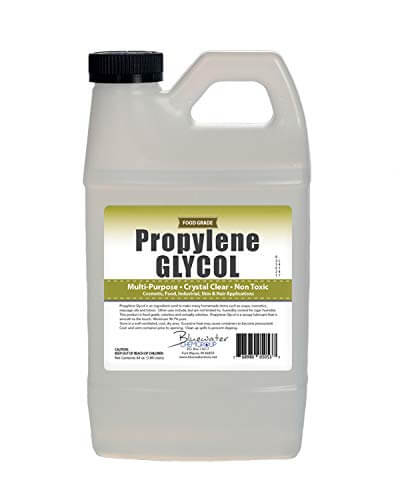Polyethylene glycol (PEG) is a synthetic polymer that is used in a variety of industries, including pharmaceuticals, cosmetics, and food.
It is odorless and colorless, and it has a wide range of solubility.
PEG is used as a binding agent, an emulsifier, and a thickener.
It is also used as a laxative, a humectant, and an ointment base.
PEG is often used for colonic preparation in dogs.
Colonic prep is a solution used to cleanse the colon before radiologic testing, such as a barium enema.
The most common PEG solutions contain sorbitol and electrolytes.
Sorbitol is a type of sugar alcohol that helps solid matter move more freely through the colon.
Electrolytes help restore the body’s natural balance when it has been disturbed by stress or disease.
Because of its laxative qualities, PEG may also be prescribed as a cure for constipation in dogs.
If your dog has complications passing stool, is suffering from colitis, or has a gastrointestinal problem, your veterinarian may recommend that you try PEG as a treatment.
However, it is important to not self-medicate and only use the drug as prescribed by the vet.
Is Polyethylene Glycol Safe For Dogs?

Even though polyethylene glycol is the de facto colonic prep solution and is considered relatively safe, there are still some concerns about other effects that it might have on dogs.
For instance, aspiration pneumonia may occur as a result of administering polyethylene glycol.
Aspiration pneumonia refers to a pulmonary infection that occurs when fluid and other substances are inhaled instead of swallowed.
In a study to determine the safety of polyethylene glycol in pets, a 2-year-old dog inhaled PEG and appeared unaffected at first.
Shortly afterward, the dog became hypoxemic, and immediate medication attention was needed.
The study observed that the issue can easily be controlled and the dog will enjoy full recovery as long as he is treated immediately.
Polyethylene glycol can also cause gastrointestinal upset in dogs, including vomiting and diarrhea.
Female and small dog breeds are more susceptible to these side effects.
As a precaution, PEG gavages should be conducted at controlled rates and preferably after antiemetic treatment.
The antiemetic treatment is meant to suppress nausea and vomiting, which can occur due to the administration of PEG.
In a nutshell, PEG is generally safe for dogs.
However, there are some known side effects including aspiration pneumonia and gastrointestinal upsets, especially in smaller dogs.
Because of these side effects, it is advisable to only use it as a prescription drug so that the vet helps you to monitor the dog and apply any corrective measures if the need arises.
Can I Give My Dog Polyethylene Glycol For Constipation?
Yes, you can give your dog polyethylene glycol for constipation.
It is generally considered safe for dogs and is effective at increasing stool motility and relieving constipation.
However, it is important to consult with your veterinarian before giving your dog this medication, especially if they have other health conditions or take any other medications.
Additionally, you should always follow the dosing instructions provided by your veterinarian and monitor your dog for any side effects, such as vomiting or diarrhea.
If you notice any negative reactions after giving your dog polyethylene glycol, consult with your veterinarian immediately to discuss other treatment options.
Is Polyethylene Glycol Eye Drops Safe For Dogs?
There is some debate about whether polyethylene glycol eye drops are safe for dogs.
While some experts believe that it can be used safely in the eyes of dogs, some experts caution against using this medication because it may be toxic or because it may cause other issues.
For instance, polyethylene glycol eye drops may cause side effects such as redness, irritation, and swelling of the eyes.
Additionally, if your dog has any preexisting eye conditions or is taking other medications that may interact with polyethylene glycol, it is important to consult with a veterinarian before using this drug on your pet.
Ultimately, the safety and effectiveness of PEG eye drops in dogs will depend on the individual dog, so it is best to speak with your veterinarian before using this medication.
Related: 10 Best Eye Drops for Dogs with Cataracts
Is Propylene Glycol Poisonous To Dogs?

Propylene glycol can be toxic and it should not be ingested by dogs.
Some clinical signs of propylene glycol toxicity in dogs include gastrointestinal upset, lethargy, and neurological abnormalities.
You may want to be careful when storing any household product that might contain propylene glycol because you want to keep it out of reach of your pets.
If you think that your dog may have ingested propylene glycol, it is important to seek medical attention immediately so that they can receive treatment for the toxicity and avoid any potential complications.
Closing Thoughts
Overall, polyethylene glycol is generally considered to be safe for dogs, as long as it is used in the recommended dosages and under the supervision of a veterinarian.
However, there are some possible side effects associated with its use, such as gastrointestinal upset and aspiration pneumonia.
To minimize these risks and ensure that your dog is receiving the most effective and safe treatment, it is important to talk to your veterinarian before giving your dog PEG for constipation or any other condition.
Additionally, you should always closely monitor your dog for any adverse reactions after using this medication and seek medical attention if needed.
You may also want to check:
Is Silicon Dioxide Safe For Dogs?
Is Magnesium Stearate Safe For Dogs?
Is Potassium Sorbate Safe For Dogs?
As an Amazon Associate, we may receive a small commission from qualifying purchases but at no extra cost to you. Learn more. Amazon and the Amazon logo are trademarks of Amazon.com, Inc, or its affiliates.

